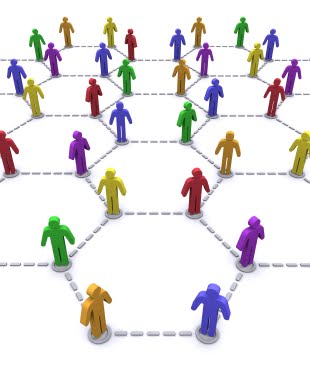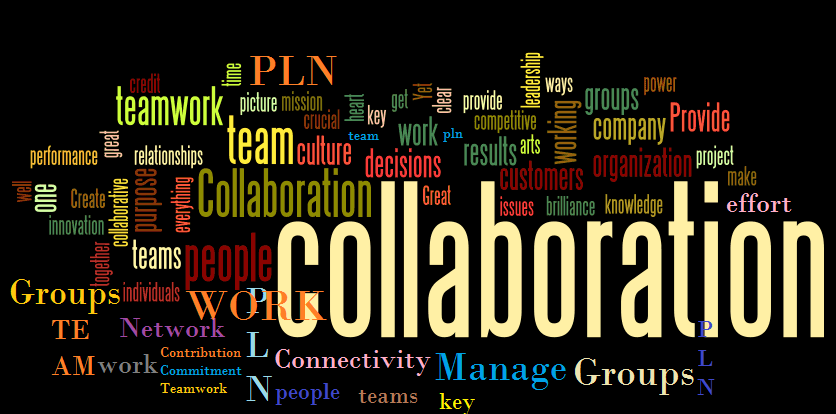Build a Best in Class Digital Learning Network
Digitalization and networking are prime forms of 21st century learning. The world is much smaller and thanks to technology; which made learning more transforming into a globally collaborative enterprise. For example professional, networks allow the scientific community to share discoveries much faster than the others.
The scientists of Harvard are considering that “sharing discoveries is more efficient and honorable than patenting them.” This idea embodies the true spirit of a successful professional learning network: collaboration for its own sake.

Educators should aim to be connected to advance their craft; and on another level, they need to use networks to prepare and the teach students and make them ready with the ever changing technological needs; as this will make them available in the changing job market. However, what is the best way to approach professional learning networks - PLNs?
The recent learning networks are based on the theory of connectivism, or learning from varied social webs. Connectivism implies to learning that relies on communicating ideas with many people at same time. Professional learning networks facilitate learning through meaningful interactions; the advantages of these networks today are two-folded. In one way, they help to improve the classroom teaching and to develop new projects; and on the other hand, they act as a form of shared intelligence that changes communal perceptions.
We will see more details on what are the ways to grow your PLN and improve the quality of your interactions; as there are diverse ways to build your network and many new management tools.
- Always keep the spirit of collaboration as your driving force. Professional learning networks are all about working together, so be mutual and resourceful and never think about what you have to gain or gained, rather think what you have to give and Why? This is the right thing to do, when you are working collaboratively. By buying the process and sharing useful information, your professional network will always grow naturally. While collaboration creates a common ground which allows others to see your interests. Authentic interest builds a solid network. Social responsibility is the best kind of motivation for establishing a PLN.
- Join an online community and share ideas by contacting or connecting to people for direct feedback. As direct feedback is more effective in a community setting. The Communities such as, Classroom versions and The Educator’s professional network provide a meaningful circle of experts. These professional development resources, such as online events are a great place to start your networking and build it.
- The next thing to make your network strong is joining a meet-up group. These meet-up groups are common thread interest groups that connect the real world; and make your life easy to extend your social networks. For instance, science teachers in your city or district might create a group to share their teaching ideas; these meet-up groups take online networks and bring them into the real world. But, if in case you can’t meet online then try using Google+ HangOuts, or Skype. Whereas, some university academics even have virtual labs on SecondLife.
- Be as symbol of light. Professional learning networks rely on open sharing of information. So if you know something, then be open to share it! Start with a specific interest and then start growing your network with other topics as time goes on. Turn out to be an expert in your niche by researching current trends. This will draw larger followers on your network, and help you to provide a novel source of information.
- Ask questions; after all, PLNs are all about learning. But do not ask questions that you can easily research. Try simple searches on TED talks, Wikis, blogs, or news articles before posting a question; as these are the. Try to be specific and think of how a question might generate interest from others. For example, you may want to refer to an article or research study when asking a question. Be specific! This will generate the best answers.
- Be an active participant; as brain power is the main asset of any professional learning systems. So you need to spend valuable time to identify the specific cause to communicate on your profile. Let your knowledge be the specific cause as it helps you grow your PLN. Try updating your niche and stay relevant to it.
- Be polite and acknowledge your contributions to the rightful owner. Show respect for the people in your network.
- Designate a professional and personal account. Be active participate in your social life - Facebook and professional life on Twitter, LinkedIn, and Google+. There can be some intersect, but its best thing to keep it least so things are easy to find. So that certain groups will appreciate different types of content. Do this in ways that are comfortable to you. You might designate accounts for each sphere of your life.
- Create a landing page; as it may be a good idea to consolidate all of your accounts on your landing page. A webpage or personal blog will make it easier for people who like to find you; and it will also create a space where you can showcase the different projects you are working on.
- Engage newbies, having this type of diversity in knowledge always allow you to increase your mentoring skills and keeps the essence of collaboration. A blogger can Collaborate, Communicate, and Create any source to be an active participate and can be proved to be the best professional to people who are seeking for connected learning networks; as PLNS trend to create new projects through the power of active collaboration.






